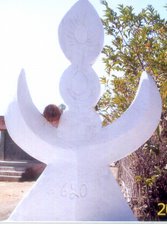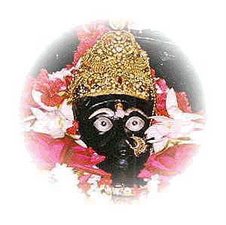 A century and a half after the Indian mutiny, echoes of the arrogance and lies that sparked insurgency could not be clearer
A century and a half after the Indian mutiny, echoes of the arrogance and lies that sparked insurgency could not be clearer William Dalrymple Thursday May 10, 2007 The Guardian
Soon after dawn on May 11 1857, 150 years ago this week,the Mughal Emperor Bahadur Shah Zafar was saying his morning prayers in his oratory overlooking the river Jumna when he saw a cloud of dust rising on the far side of theriver. Minutes later, he was able to see its cause: 300East India Company cavalrymen charging wildly towards his palace.
The troops had ridden overnight from Meerut, where they had turned their guns on their British officers, and had come to Delhi to ask the emperor to give his blessing to their mutiny. As a letter sent out by the rebels' leaderssubsequently put it: "The English are people who overthrow all religions ... As the English are the common enemy of both [Hindus and Muslims, we] should unite in their slaughter ... By this alone will the lives and faiths ofboth be saved."
Article continues The sepoys entered Delhi, massacred every Christian man, woman and child they could find and declared the 82-year-old emperor to be their leader. Before long the insurgency had snow balled into the largest and bloodiest anticolonial revolt against any European empire in the 19thcentury. Of the 139,000 sepoys of the Bengal army, all but 7,796 turned against the British.
In many places the sepoys were supported by a widespread civilian rebellion.There is much about British imperial adventures in the eastat this time, and the massive insurgency it provoked, whichis uneasily familiar to us today. The British had beentrading in India since the early 17th century. But thecommercial relationship changed towards the end of the18th, as a new group of conservatives came to power inLondon, determined to make Britain the sole global power.
Lord Wellesley, the brother of the Duke of Wellington and governor general in India from 1798 to 1805, called his new approach the Forward Policy. But it was in effect a projectfor a new British century. Wellesley made it clear he wouldnot tolerate any European rivals, especially the French,and planned to remove any hostile Muslim regimes that might
presume to resist the west's growing might.The Forward Policy soon developed an evangelical flavour.
The new conservatives wished to impose not only Britishlaws but also western values on India. The country would benot only ruled but redeemed. Local laws which offendedChristian sensibilities were abrogated - the burning of widows, for instance, was banned. One of the East IndiaCompany directors, Charles Grant, spoke for many when he wrote of how he believed providence had brought the Britishto India for a higher purpose: "Is it not necessary toconclude that our Asiatic territories were given to us, notmerely that we draw a profit from them, but that we mightdiffuse among their inhabitants, long sunk in darkness, thelight of Truth?"
The British progressed from removing threatening Muslim rulers to annexing even the most pliant Islamic states. InFebruary 1856 they marched into Avadh, also known by theBritish as Oudh. To support the annexation, a "dodgydossier" was produced before parliament, so full ofdistortions and exaggerations that one British official whohad been involved in the operation described theparliamentary blue book (or paper) on Oudh as "a fiction ofofficial penmanship, [an] Oriental romance" that wasrefuted "by one simple and obstinate fact", that theconquered people of Avadh clearly "preferred the slanderedregime" of the Nawab "to the grasping but rose-colouredgovernment of the company".The reaction to this came with the great mutiny, or as it is called in India, the first war of independence.
Though it reflected many deeply held political and economicgrievances, particularly the feeling that the heathenforeigners were interfering with a part of the world towhich they were alien, the uprising was consistentlyarticulated as a defensive action against the inroadsmissionaries and their ideas were making in India, combinedwith a generalised fight for freedom from westernoccupation.Although the great majority of the sepoys were Hindus,there are many echoes of the Islamic insurgencies the US fights today in Iraq and Afghanistan.
In Delhi a flag of jihad was raised in the principal mosque, and many of the resistance fighters described themselves as mujahideen or jihadis. There was even a regiment of "suicide ghazis" who vowed to fight until they met death.Events reached a climax on September 14 1857, when British forces attacked the besieged city. They proceeded to massacre not only the rebel sepoys and jihadis, but also the ordinary citizens of the Mughal capital. In one neighbourhood alone, Kucha Chelan, 1,400 unarmed citizens were cut down. Delhi, a sophisticated city of half amillion souls, was left an empty ruin.The emperor was put on trial and charged, quite in accurately, with being behind a Muslim conspiracy to subvert the empire stretching from Mecca and Iran toDelhi's Red Fort. Contrary to evidence that the uprising broke out first among the over whelmingly Hindu sepoys, theprosecutor argued that "to Musalman intrigues and Mahommedan conspiracy we may mainly attribute the dreadful calamities of 1857". Like some of the ideas propelling recent adventures in the east, this was a ridiculous and bigoted over simplification of a more complex reality. For,as today, western politicians found it easier to blame"Muslim fanaticism" for the bloodshed they had unleashed than to examine the effects of their own foreign policies.Western politicians were apt to cast their opponents in therole of "incarnate fiends", conflating armed resistance to invasion and occupation with "pure evil".Yet the lessons of 1857 are very clear. No one likes peopleof a different faith conquering them, or force-feeding themimproving ideas at the point of a bayonet. The British in1857 discovered what the US and Israel are learning now,that nothing so easily radicalises a people against them,or so undermines the moderate aspect of Islam, asaggressive western intrusion in the east. The histories of Islamic fundamentalism and western imperialism have, afterall, long been closely and dangerously intertwined. In acurious but very concrete way, the fundamentalists of all three Abrahamic faiths have always needed each other to reinforce each other's prejudices and hatreds. The venom ofone provides the lifeblood of the others.·
William Dalrymple's The Last Mughal: The Fall of aDynasty, Delhi 1857, has just been published in paper back by Bloomsbury williamdalrymple.com







No comments:
Post a Comment